| [1] Tai TW, Chang CW, Lai KA, et al.Effects of tourniquet use on blood loss and soft-tissue damage in total knee arthroplasty: a randomized controlled trial. J Bone Joint Surg Am. 2012; 94(24): 2209-2215.[2] 蔡道章,杨杨,张曾.高凝血状态患者人群全膝关节置换术中应用止血带的对照研究[J]. 中华关节外科杂志(电子版), 2018, 12(4): 495-500.[3] Abbas K, Raza H, Umer M, et al. Effect of early release of tourniquet in total knee arthroplasty. J Coll Physicians Surg Pak. 2013;23(8): 562-565. [4] Kvederas G, Porvaneckas N, Andrijauskas A, et al. A randomized double-blind clinical trial of tourniquet application strategies for total knee arthroplasty. Knee Surg Sports Traumatol Arthrosc. 2013;21(12): 2790-2799.[5] Huang ZY, Pei FX, Ma J, et al. Comparison of three different tourniquet application strategies for minimally invasive total knee arthroplasty: a prospective non-randomized clinical trial. Arch Orthop Trauma Surg. 2014; 134(4): 561-570.[6] Zhang W, Liu A, Hu D, et al. Effects of the timing of tourniquet release incemented total knee arthroplasty: a systematic review and meta-analysis of randomized controlled trials. J Orthop Surg Res. 2014;9(125): 1-11.[7] Na YG, Bamne AB, Won HH, et al. After early release of tourniquet in total knee arthroplasty, should it be reinflated or kept deflated? A randomized trial. Knee Surg Sports Traumatol Arthrosc. 2015; 25(9): 2769-2777.[8] Tie K, Hu D, Qi Y, et al. Effects of tourniquet release on total knee arthroplasty. Orthopedics. 2016;39(4): 642-650.[9] Ishii Y, Matsuda Y. Effect of tourniquet pressure on perioperative blood loss associated with cementless total knee arthroplasty. J Arthroplasty. 2005;20(3): 325-330.[10] Ishii Y, Noguchi H, Matsuda Y, et al. A new tourniquet system that determines pressures in synchrony with systolic blood pressure in total knee arthroplasty. J Arthroplasty. 2008;23(7): 1050-1056.[11] Tetro AM, Rudan JF. The effects of a pneumatic tourniquet on blood loss in total knee arthroplasty. Can J Surg. 2001;44(1): 33-38.[12] Smith TO, Hing CB. Is a tourniquet beneficial in total knee replacement surgery? A meta-analysis and systematic review. Knee. 2010;17(2): 141-147.[13] 谢小伟,岳辰,黄泽宇,等.全膝关节置换术应用与不应用止血带的随机对照研究[J]. 中国矫形外科杂志, 2017, 25(17): 1572-1576.[14] 张琦,董纪元,龚科,等. 应用止血带对人工全膝关节置换术的影响研究[J]. 中国修复重建外科杂志, 2016, 30(4): 421-425.[15] Zhang W, Li N, Chen S, et al. The effects of a tourniquet used in total knee arthroplasty: a meta-analysis. J Orthop Surge Res. 2014; 9(13): 1-9.[16] 杜传超,邱海滨,张衡,等. 关于全膝关节置换术中使用止血带利弊随机对照性研究的系统回顾及Meta 分析[J]. 中国骨与关节损伤杂志, 2017, 32(8): 800-803.[17] Pfitzner T, von Roth P, Voerkelius N, et al. Influence of the tourniquet on tibial cement mantle thickness in primary total knee arthroplasty. Knee Surg Sports Traumatol Arthrosc. 2016;24(1): 96-101.[18] Tejwani NC, Immerman I, Achan P, et al. Tourniquet cuff pressure: The gulf between science and practice. J Trauma. 2006; 61(6): 1415-1418.[19] Lee OS, Lee MC, Han HS. Efficacy and safety of a new elastic tourniquet cuff in total knee arthroplasty: a prospective randomized controlled study. Biomed Eng Online. 2017; 16(1): 102.[20] 薛晨曦,姚运峰,荆珏华. 全膝关节置换术中使用止血带的效果与安全性分析[J]. 中国骨与关节损伤杂志, 2018, 33(6): 626-628.[21] Olivecrona C, Ponzer S, Hamberg P, et al. Lower tourniquet cuff pressure reduces postoperative wound complications after total knee arthroplasty. J Bone Joint Surg Am. 2012;94(24): 2216-2221.[22] 谢小伟,岳辰,康鹏德,等. 加速康复模式下初次全膝关节置换术后急性疼痛的相关因素分析[J]. 中华骨与关节外科杂志, 2016, 9(6): 489-492.[23] 王刚,曹晓瑞,陈晓勇,等.膝关节置换术中止血带的使用对术后加速康复的影响[J]. 中华骨与关节外科杂志, 2017, 10(1): 27-32.[24] 李小磊,王琦,颜连启,等.全膝关节置换过程中止血带使用方法对患肢功能恢复的影响[J]. 中国组织工程研究, 2014,18(53): 8560-8564.[25] Unver B, Karatosun V, Tuncali B. Effects of tourniquet pressure on rehabilitation outcomes in patients undergoing total knee arthroplasty. Orthop Nurs. 2013;32(4): 217-222.[26] Zan PF, Yang Y, Fu D, et al. Releasing of tourniquet before wound closure or not in total knee arthroplasty: a meta-analysis of randomized controlled trials. J Arthroplasty. 2015;30(1): 31-37.[27] de Souza Leão MG, Neta GP, Coutinho LI,et al. Comparative analysis of pain in patients who underwent total knee replacement regarding the tourniquet pressure. Revista Brasileira de Ortopedia (English Edition). 2016;51(6): 672-679.[28] Papalia R, Zampogna B, Franceschi F, et al. Tourniquet in knee surgery. Br Med Bull. 2014; 11(1): 63-76.[29] 黄家谷,张克,田华,等.单侧初次全膝关节置换后隐性失血的因素分析[J]. 中国组织工程研究, 2016, 20(26): 3823-3829. |
.jpg) 文题释义:
文题释义: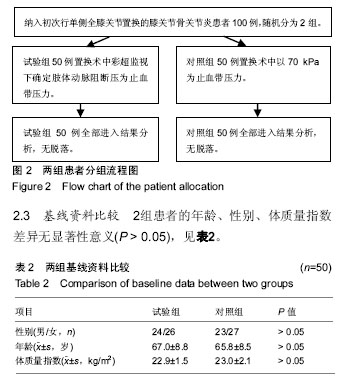
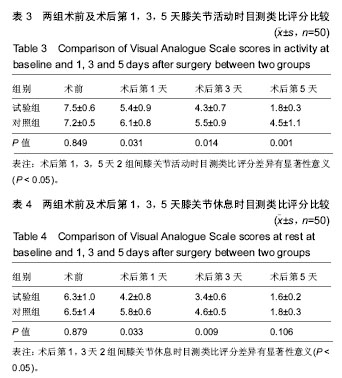
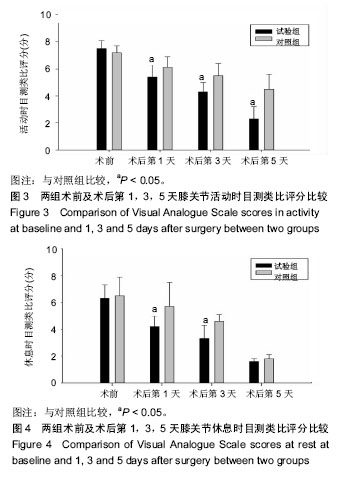

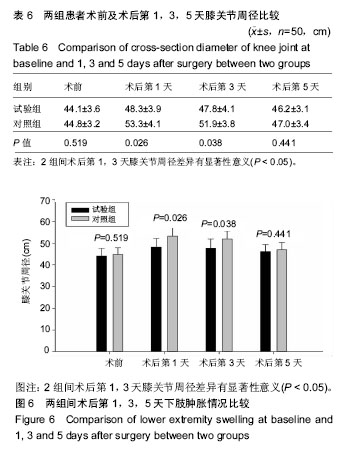
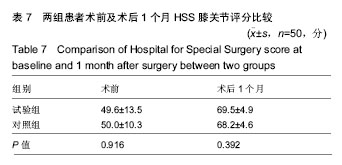
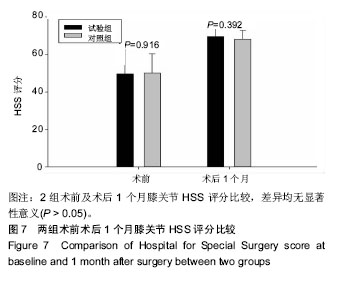
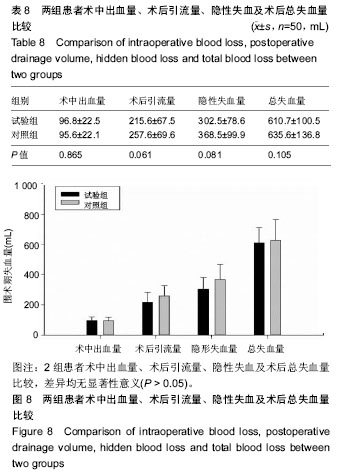
.jpg)
.jpg)
.jpg) 文题释义:
文题释义: